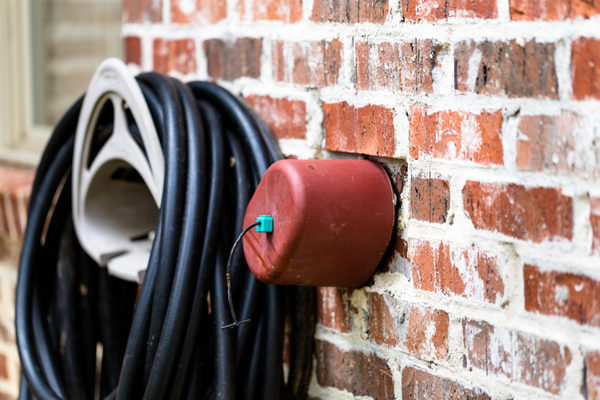You’ve got your home insulated, your AC unit covered, drafts around doors and windows sealed. You’re super warm and toasty inside, but if you ignore the things attached to the outside of your home and in your garden, they could come back to haunt you in the depths of freezing winter.
First, you need to head outside and drain your garden hoses before freezing weather arrives. Hoses left attached and full of water can be ruined if the water freezes and splits the hose. Start by disconnecting each hose and removing any spray nozzles. Lift one end of the hose up and move down the hose to allow the water to drain out. Store the drained hoses in a shed or garage until spring. If you need a hose for occasional watering during the winter, disconnect and drain it after each use. Make sure to remove or open the sprayer nozzle so any water left inside can expand and freeze without breaking the hose.
Next, it’s important to drain and cover outdoor hose faucets to prevent the pipes and spigot from freezing.
How to Winterize Outdoor Faucets:
- In your basement or crawl space, locate the pipe that supplies each outdoor faucet, and follow it back until you find the shutoff valve.
- Close the valve controlling each faucet.
- Open all the faucets on the outside.
- Hold a bucket under each shutoff valve under the house, and open the small drain cap located just above the shutoff valve to allow the water in the pipe to drain out.
- Repeat this step with every faucet shutoff valve.
- Close the drain caps, and turn off the outdoor faucets.
Winterizing faucets without shutoff valves:
If your home’s outdoor faucets don’t have shutoff valves, you may have frost-free faucets, which don’t require draining. These faucets are installed at a slight angle with the valve located inside the foundation to allow water to drain out of the pipe when not in use. If you’re not sure if your faucets are frost-free, have a plumber check to be sure.
If your faucets are not frost-free, and you can’t shut them off and drain them, your best bet is to install an insulating foam cover. These covers fit on the outside of the faucet and cinch tightly against the house with a foam seal to help keep the faucet from freezing. While insulating covers aren’t as effective as draining faucets, they can help keep your outside spigots and pipes from freezing when the temperature drops.
Finally, a frozen and burst pipe is a very unpleasant winter surprise, so it’s a good idea to insulate water pipes in a crawlspace to reduce the chance of freezing.
How to Insulate Water Pipes:
- Choose foam pipe insulation that matches the diameter of the water pipes.
- Cut the insulation to length with a box cutter or scissors.
- Open the insulation along the split edge, and fit it around the pipes.
- Tape any joints in the foam insulation together.
—
Photo Credit: C5 Media / Shutterstock.com
